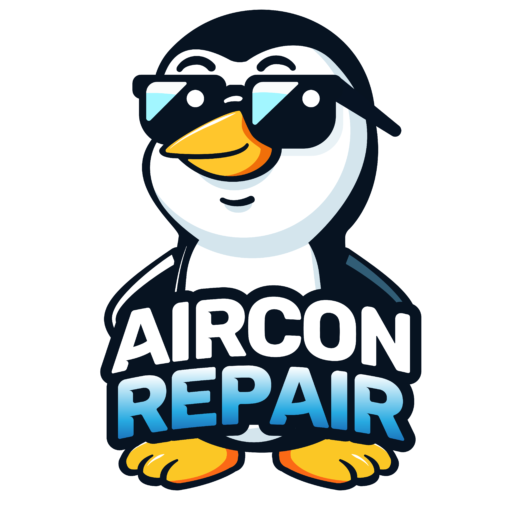Your air conditioning system is essential for maintaining indoor comfort, but have you ever noticed water dripping from it? While some air conditioning systems naturally expel water as part of their cooling process, excessive or unusual dripping may indicate an issue that needs attention. Understanding why your air conditioning system drips water can help you maintain its efficiency and prevent costly repairs.
How an Air Conditioning System Produces Water
To cool indoor spaces effectively, an air conditioning system removes heat and humidity from the air. This process occurs at the evaporator coil, where warm air passes over cold refrigerant-filled coils. As a result, moisture in the air condenses into water droplets, similar to how condensation forms on a cold glass of water on a hot day. This moisture collects in a drain pan and exits the system through a condensate drain line. However, when something disrupts this process, it can lead to visible water leakage.
Common Reasons for Water Dripping from Your Air Conditioning System
1. High Humidity Levels Increase Condensation
The amount of water your air conditioning system produces depends on the humidity level in your environment. In humid regions, the system works harder to remove moisture, generating more condensation. If the system cannot drain this excess moisture effectively, you may notice water dripping from your unit.
2. Clogged or Blocked Condensate Drain Line
One of the most common causes of water leakage in an air conditioning system is a clogged drain line. Over time, dirt, mold, and algae can accumulate in the condensate drain pipe, blocking the flow of water and causing it to back up. When this happens, water may overflow from the drain pan, leading to visible leaks.
How to Fix It:
- Use a wet/dry vacuum to clear debris from the drain line.
- Regularly flush the drain with a mixture of vinegar and warm water to prevent clogs.
- Install a drain line safety switch to shut off the unit if a blockage is detected.
3. Improper Installation or Uneven Placement
If your air conditioning system is not installed correctly or is placed on an uneven surface, the drain pan may not be positioned to direct water efficiently toward the drain line. This can lead to water pooling and eventually dripping from the unit.
Solution:
- Ensure the unit is level and securely mounted.
- Have a professional inspect the installation if persistent leaks occur.
4. Dirty or Frozen Evaporator Coils
When evaporator coils become dirty, they struggle to absorb heat efficiently, causing ice to form on the coils. Once the ice melts, excess water may drip from the unit, leading to visible leakage.
Preventative Measures:
- Regularly clean or replace the air filter to ensure proper airflow.
- Schedule professional maintenance to clean the evaporator coils.
- Check refrigerant levels, as low refrigerant can also contribute to freezing.
5. Cracked or Overflowing Drain Pan
The drain pan collects water before it exits through the drain line. Over time, the pan may develop cracks or rust, leading to water leaks.
Solution:
- Inspect the drain pan for visible cracks or damage.
- If the pan is damaged, replace it with a new one to prevent leaks.
6. Faulty Condensate Pump
If your air conditioning system is installed in a basement or an area where gravity cannot naturally drain the water, a condensate pump is required to remove the collected moisture. A malfunctioning pump can lead to water backup and leaks.
Fixing the Issue:
- Check if the pump is running properly.
- Clean the pump and ensure it is free from debris.
- Replace the pump if it is malfunctioning.
Dripping Water from Indoor vs. Outdoor Units
Indoor Unit Water Leaks
If water is dripping from your indoor air conditioning system, it is often due to a clogged drain line, frozen coils, or improper installation. This type of leak can damage walls, ceilings, and flooring if left unaddressed.
Outdoor Unit Water Drips
Water dripping from the outdoor condenser unit is usually normal, especially in humid conditions. However, excessive water discharge could indicate a refrigerant issue or a malfunctioning component that needs professional attention.
Energy-Efficient Air Conditioning Systems and Water Management
Modern air conditioning systems are designed to maximize energy efficiency while minimizing water waste. Many high-efficiency models use advanced technology to:
- Recycle condensation to cool internal components.
- Evaporate excess moisture rather than expelling it.
- Reduce humidity levels without excessive water production.
Upgrading to an energy-efficient air conditioning system can help reduce water-related issues while lowering your energy bills.
How to Prevent Water Dripping Issues in Your Air Conditioning System
- Perform Regular Maintenance: Schedule seasonal maintenance to clean coils, check refrigerant levels, and inspect the drainage system.
- Change Air Filters Frequently: A clean filter improves airflow and prevents frozen coils.
- Keep the Drain Line Clear: Use a cleaning solution monthly to prevent blockages.
- Ensure Proper Installation: If your unit is newly installed and leaking, consult an expert to check for leveling or drainage issues.
Conclusion
Water dripping from your air conditioning system can be a minor inconvenience or a warning sign of a larger issue. While some condensation is normal, excessive leakage may indicate clogged drain lines, frozen coils, improper installation, or a faulty component. Regular maintenance, such as cleaning the drain line, checking for refrigerant issues, and inspecting the drain pan, can help prevent water-related problems. If your system continues to leak despite troubleshooting, professional servicing is the best course of action to protect your AC unit and your home. By staying proactive, you can ensure your air conditioning system runs efficiently, keeping your indoor space cool and comfortable without unnecessary water damage.
